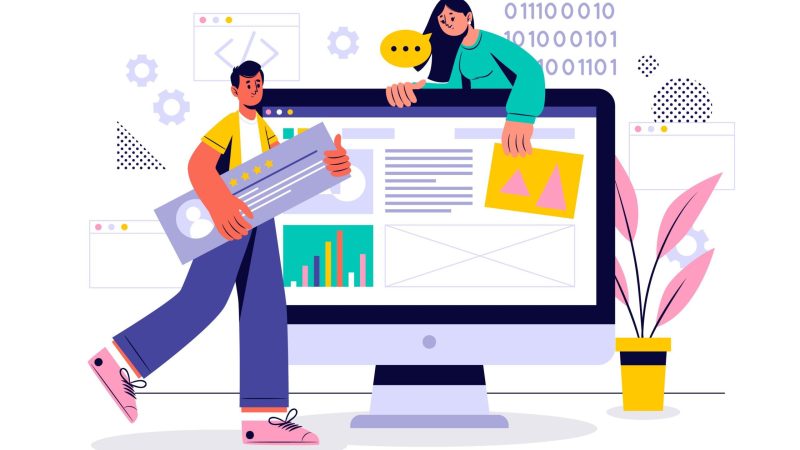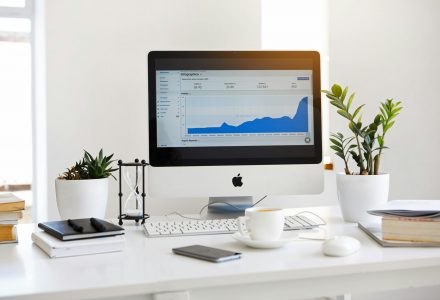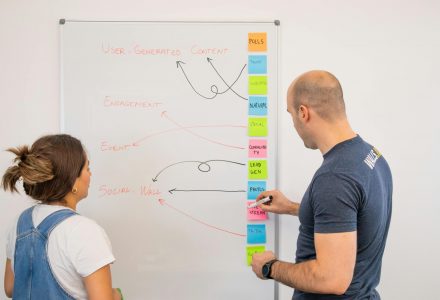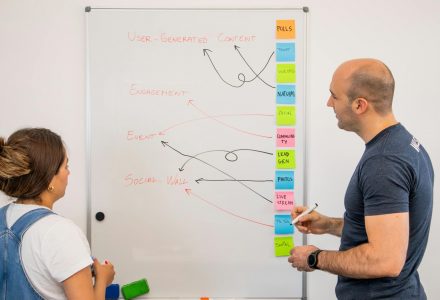A well-designed B2B landing page that efficiently draws in and converts visitors is essential to the success of your company. Landing pages are the foundation of every successful campaign, whether you’re advertising your B2B SaaS business, introducing a new product, or running a promotion.
However, creating effective landing pages may be more challenging for B2B businesses compared to B2C landing pages. This is mostly because in B2B, the products are digital and customers might have trouble picturing what they are buying. In addition, B2B sales are much more rational than B2C sales, which means that B2B landing pages need to convince customers who are more calculating, whereas B2C landing pages focus more on emotional impulse.
The good news if you have been wondering how to create a beautiful landing page that converts, is that there are several tips and B2B landing page examples of best practices that can help you. In this post, we’ll go through some of the top suggestions for improving the conversion rate of a B2B landing page.
Understand Your Audience
Every element of your landing page should be influenced by your target customers. Create distinct landing pages for various audience segments since your landing page should be hyper-targeted and focused. Ask yourself questions like “Who is your target audience?”, “What are their pain points?”, and “What problem does your software solve?”
The more accurately you can predict what your target audience wants, the easier it will be to convince them to take an action on your landing page, such as providing contact information to receive a custom quote, signing up for a webinar, signing up for a free trial, or scheduling a demo.
Address the Pain Point
Identifying the specific problem or need that your software is resolving/satisfying for your audience is an important step in all of your marketing initiatives, including the creation of new landing pages, throughout all of the stages of the sales funnel.
Consider the difficulties that your potential customers may encounter and how you might be able to help in order to improve the customer experience. By employing this approach, you can attract their attention and get closer to turning them into real customers.
Optimize Your Home Screen
First impressions matter when it comes to creating well-performing landing pages. Pay attention to the first elements that are visible on your page. Avoid using enormous visual elements and graphics, large font sizes, and designs that obscure the website’s more crucial features. Don’t be afraid to use white space to make certain areas or elements on your landing page (headline, body text, CTA buttons, images, social proof, video, trust seals, etc.) stand out.
If you provide too little information, you will quickly lose the visitors’ attention. If, on the other hand, you provide your audience with too much information, you run the risk of diluting your message. Find the sweet spot between not giving the visitor enough information and overwhelming them with it.
Have a Catchy Headline
The headline is the most crucial component in luring the visitor to further investigate your software. Its goal is to persuade readers that it is worthwhile for them to read more or take the desired action. In other words, it shows them why they should care.
In order to make an impression, your headline should be precise, unambiguous, and highly engaging. Use the language your potential clients use to talk about their pain points and give a brief explanation of why you are the greatest option to solve those pain points.
Create a Clear CTA
Once you have a clear idea of the action you want site visitors to perform (start a free trial, request a quote, sign up, etc.), you can create your CTA. Whatever action you want your audience to do, it’s likely that it will entail filling out a form with some kind of data. Depending on the size of your B2B SaaS company and previous experience, you probably already have some idea about the type of form that will work well for your target audience.
When it comes to the best location for a CTA on a landing page, many marketers are seeing the advantages of placing it in your header, explaining that by doing so, all visitors will see it. It’s a good idea to test your call-to-action and experiment with what appeals to your clients, just like you would with any other header element on your landing page. This includes the call-to-action buttons, copy, font, size, and color.
Focus on Your Product’s Benefits
The landing page exists because of the offer (your software). Visitors should find it valuable enough to share their contact information.
Many SaaS companies make the error of overstating the features of their B2B products while neglecting to mention their benefits. This is less effective and will probably cause the customer to leave. Your landing page should highlight the offer and, more significantly, the benefits that it offers.
Create a Sense of Scarcity or Urgency
In many cases, visitors fail to convert because they deliberate too much, take too long to act, or simply don’t respond to your CTAs. You can avoid such delays by instilling a sense of urgency.
According to research, product scarcity boosts a customer’s perception of the worth of the product and draws them in. Limiting the number of products available (“Only three spots left”) or the amount of time left to act (“Special pricing ends in two days”) might help you take advantage of this bias.
Add Social Proof
Sharing the experiences of clients who are already using your product can help you build visitor trust. Some of the most effective forms of social proof are word-of-mouth and customer testimonials.
Use customer quotes from case studies, interviews, and testimonials. It’s even better if you include real images of your clients and information about their jobs, industry, and company name. You can also use the logos of well-known clients to increase your credibility and/or display client lists to demonstrate the variety of applications for your product.
Include Video
Video has shown to be incredibly effective when it comes to increasing conversions. According to one study, including a video on a landing page increased conversions by more than 46%.
This is due to the fact that the video can be short and to the point which will generally appeal more to prospects. To get the best results, only include the crucial information that visitors should be aware of and simplify it so that it is easy to understand.
Conduct A/B Testing
Creating a high-performing B2B landing page will probably take a few trials and errors, but don’t worry, even well-known companies have trouble getting things right the first time.
Create two variations of your landing page and compare the results. Make little changes over time to determine whether they affect your conversion rate, such as changing the headline, focusing on other selling points, or changing the graphics.
The Bottom Line
We hope that this article explains in enough detail how to create a landing page that converts for your B2B SaaS business. The key is to understand the key landing page B2B best practices and build your strategy around them. The tips provided above should inspire you to create a highly effective B2B landing page design that will convert a greater portion of new visitors. Remember, the key is to experiment relentlessly to see which elements drive greater conversions.
If your goal is to increase your conversion rate across your customer funnels and key landing pages, hiring a CRO agency is the most effective way to do it. Talk to a experienced CRO strategist at Northpeak to learn about how conversion rate optimization services can help you start improving your website and customer experience.






